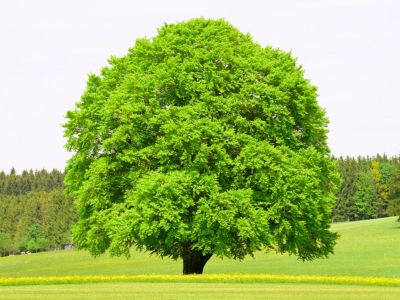Beech Tree Identification
It’s easy to recognize a beech tree by its smooth, gray bark, which the tree keeps throughout its lifespan. In shady sites, beech trees have a massive, straight trunk that soars to a height of 80 feet (24 m.) or more. The crown stays small but dense in shade. The trees are shorter in full sun, but they develop a large, spreading crown. Beech tree leaves are about 6 inches (15 cm.) long and 2 ½ inches (6 cm.) wide with saw-tooth edges and lots of side veins. The flowers generally go unnoticed. Small, yellow male flowers bloom in round clusters along the branches and tiny, red female flowers bloom at the ends of the branches in early spring. After pollination, the female flowers give way to edible beech nuts, which are enjoyed by a number of small mammals and birds. The American beech is the variety commonly seen in the United States, although there are several types of beech trees found throughout Europe and Asia. The American hornbeam (Carpinus caroliniana) is sometimes called blue beech, but it is an unrelated species of small tree or shrub.
Beech Tree Planting
Plant beech trees in a good, rich, acidic soil that isn’t compacted. It likes moist, well-drained soil. The dense crown spreads 40 to 60 feet (12-18 m.) at maturity, so give it plenty of room. Beech trees live 200 to 300 years, so choose the site carefully. Dig the planting hole two to three times wider than the root ball to loosen the soil around the planting area. This encourages the roots to spread into the surrounding soil rather than staying in the hole. If the soil isn’t particularly rich, add a few shovels full of compost to the fill dirt. Don’t add any other amendments at planting time.
Care of Beech Trees
Newly planted beech trees need plenty of moisture, so water them weekly in the absence of rain. Mature trees withstand moderate drought, but they’ll do best with a good soaking when you’ve been a month or more without a drenching rain. Spread a 2 or 3 inch (5-8 cm.) layer of mulch over the root zone of young trees to help the soil retain moisture. Once the dense crown develops, mulch is no longer necessary, but it keeps the bare ground around the tree looking neat. Beech trees need regular fertilization. Spread the fertilizer over the root zone and then water it in. Use a pound (454 g.) of 10-10-10 fertilizer for each 100 square foot (9 sq. m.) of the root zone. The root zone extends a foot (31 cm.) or so beyond the canopy of the tree.
